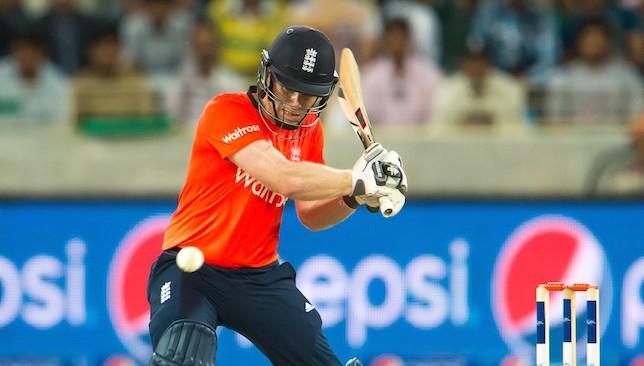
When England lost to Bangladesh in March this year by 15 runs to crash out of the World Cup, critics called it another sign that England had plunged to the lowest of points in limited overs cricket and that there was no chance of them dazzling in coloured clothing any time soon.
– Tweets of the week: Day/night Test delights
– Radio Cricket: Meet TMS’ newest commentator
– Cricket Xtra: Clarke gets timing wrong with book
– FOLLOW: Live cricket scores around the world
Test cricket has generally been in good health in England and there was a feeling that limited overs cricket never got the priority it deserved, even though there were quite a few world-class Englishmen operating in ODIs and T20s.
With expectations at an alltime low, England did something remarkable; they started to win. And win big.
First up, they clashed with dynamic World Cup finalists New Zealand who were on the peak of the limited overs powers. In the very first ODI of that series, England smashed 408 and crushed the Kiwis by 201 runs. They continued their fine form and took the series 3-2 with a hard-fought three-wicket triumph in the final game.
The next month, the Aussies came visiting for the Ashes. The hosts lifted the urn and were in fine form going into the limited overs series. The euphoria of the Test success showed as England lost the first two ODIs but they bounced back in the next two to take the series into the decider, which they lost. Even so, it was a fine fightback against the world champions.
The tour of the UAE was always going to be a difficult assignment and England found the going tough in the Test series, going down 2-0. But the limited overs leg was a different story. Against all odds, England found a new gear in their game and blew Pakistan away on their home turf to claim the series 3-1 with massive victory margins of 95 runs, six wickets and 84 runs.
However, their most significant performance came in the back-to-back T20 games in the three match series this week. In the first match in Dubai, England defended 160 with seamers Reece Topley and Liam Plunkett taking three wickets apiece while in the second T20, it was Plunkett (3-33) again who teamed up with leg-spinner Adil Rashid (2- 18) to help eke out a three-run win.
Great series win. pic.twitter.com/LtE09Zwm0r
— Eoin Morgan (@Eoin16) November 20, 2015
The T20 series win was the culmination of six months’ hard work and is very important as it comes with a little over three months to go for the World T20, which will be held in India.
The wickets in the UAE are fairly similar to the ones that will be provided during the showpiece event in India and England’s efforts against a subcontinental giant in its own backyard thus assume greater significance.
The likes of Eoin Morgan, James Vince and Jos Buttler have shown that they can make an impact in the shortest format on pitches that assists slow bowlers.
On the bowling front, Plunkett, Topley and Rashid have given enough glimpses of their abilities on Asian surfaces.
With a host of fresh and eager faces in the team, led by the effervescent Morgan, England look a formidable force and when they travel to India in March, the rest of the teams should take them very seriously because this England side will not roll over so easily.
That they don’t have any pressure of expectation makes them that much more dangerous. They have tasted a lot of limited overs success this season and will be desperate to make up for all those years of poor performances.
Was the BCCI right after all?
The entire cricketing world took pot shots at the Indian cricket board when they stuck to their stand of opposing the Decision Review System.
The Indian players did not have faith in the ball-tracking technology and also the importance given to ‘umpire’s call’ in decisions that can go either way. The general lack of faith in the system has remained despite all other teams accepting the system in its various forms; with combinations of Hot Spot, Snicko and ball-tracking technology.
The Lyon (NON) dismissal today’s made DRS slightly farcical…How much do we trust/mistrust the HotSpot? Is Real Time Snicko more reliable?
— Aakash Chopra (@cricketaakash) November 28, 2015
No one could understand why India opposed something that everyone accepted. But slowly, they are beginning to realise that there is some logic to India’s objection.
Now there is a consensus among players that ball-tracking technology is not decidedly more reliable than the on-field umpire. And secondly, Hot-Spot and Snicko can’t always prove whether or not the batsman has hit the ball as technology can be unpredictable.
The latest saga involving the DRS came up in the day/night Test in Adelaide. Nathan Lyon swept Mitchell Santner and the ball went to slip. The Kiwis reviewed the ‘not out’ decision and replays showed a clear nick through Hot Spot but nothing on the stump microphone.
Almost everyone else was convinced that Lyon had edged it and the batsman had walked all the way to the boundary. But the third umpire decided that there was no conclusive proof and that the mark on Hot Spot could have ‘come from anywhere’.
The DRS was intended to weed out shocking decisions. But increasingly, it is throwing up new ones of its own which seem just as bad as those given by the on field umpires. Looks like the Indians have a point.